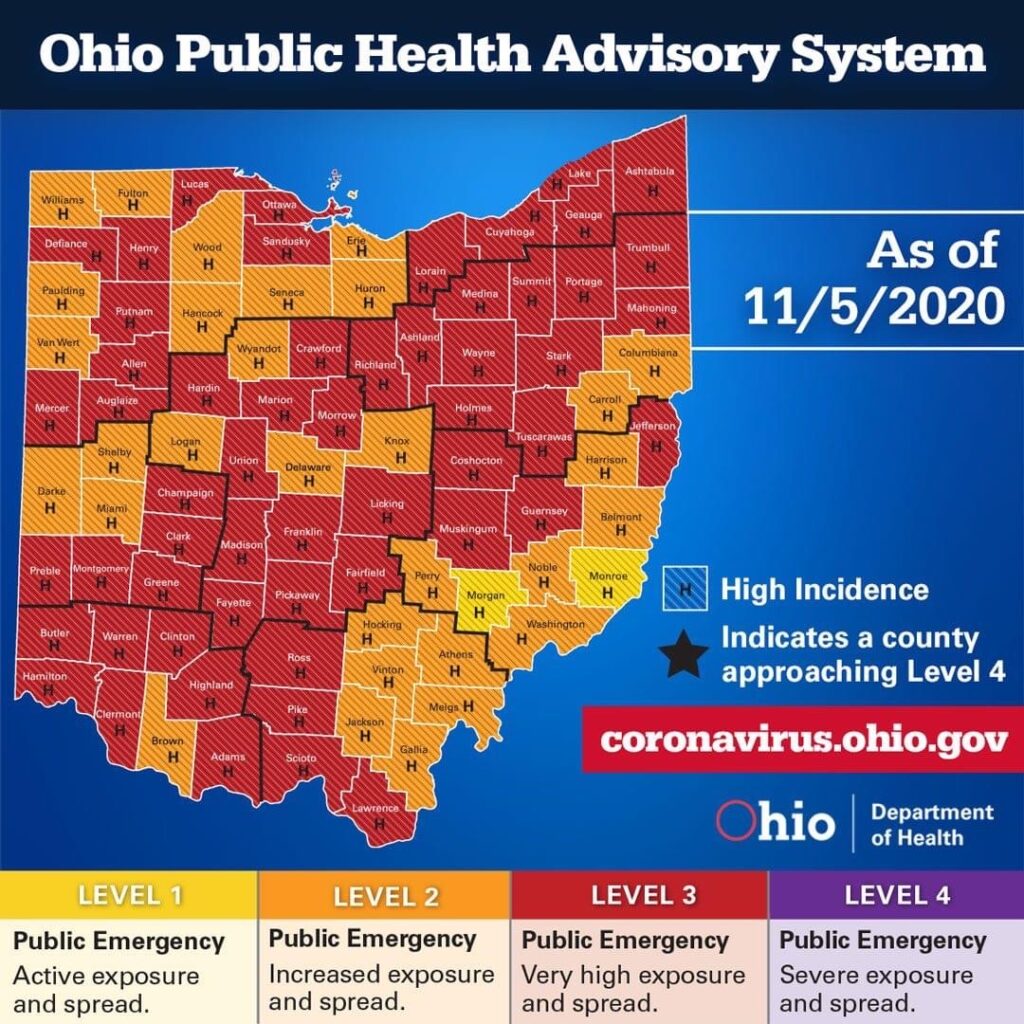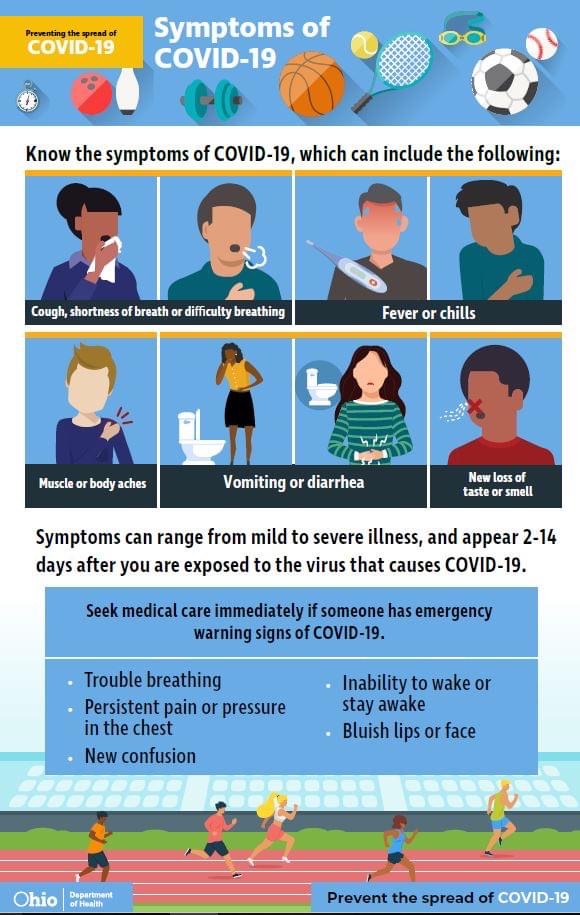COVID-19 Spiking in Rural Ohio


COVID-19 Spiking in Rural Ohio
COLUMBUS, Ohio — During one of the most significant COVID-19 surges in Ohio, the state’s rural counties have the highest rates of new cases.
Counties in northwest Ohio lead the uptick. Putnam County, north of Lima, tops the state’s list of counties ranked by the rate of cases reported in mid to late October. Auglaize and Mercer counties are listed second and third. Also making the top 20 area counties of Athens and Jackson.
Though state and health officials have required everyone to wear face masks and avoid large gatherings, some have resisted, particularly in rural Ohio, which until October had largely been spared high numbers of COVID-19 cases.
What seems to be a rural-urban divide over mask-wearing can become glaring to Sam Custer when he leaves his home in Darke County and drives about a half hour away to Dayton.
The interim assistant director of Ohio State University Extension notices how in Dayton, everyone or nearly everyone in stores or outside is wearing a mask. Yet within Darke County, Custer sees far fewer people wearing masks in stores or in public. OSU Extension is the outreach arm of The Ohio State University College of Food, Agricultural, and Environmental Sciences (CFAES).
“It’s very concerning to me that people feel that they don’t need to wear their masks, and that we have so much confusion about the facts around COVID-19 and around the safety steps we need to take to have the best quality of life as possible,” Custer said.
Custer is recovering from COVID-19, having caught it recently, despite consistently wearing a mask, avoiding gatherings, and frequently washing his hands. He hopes more people will begin to take the illness seriously.
“There’s a mentality out there that everybody is going to get it, so we might as well go ahead and get sick and get it over with,” Custer said.
But no one knows exactly how COVID-19 will affect them. They could have mild or no symptoms. They could be placed on a respirator or even die, and there’s a whole lot of variation in between.
And as weddings, funerals, and other get-togethers continue, people have a hard time saying no, said Denny Riethman, an educator with OSU Extension in Mercer County.
“Mercer County is very family-oriented,” Riethman said. “There’s a lot of large families here. When people get together as a family, it’s easy to let your guard down.”
At family gatherings, as well in public, county residents don’t always wear masks, Riethman said.
People resist wearing a mask either because they don’t like someone telling them what to do, or they’re skeptical that the threat is as significant as doctors and scientists say it is.
And sometimes the reasons are political. Messages downplaying the potential danger of the illness, some put forth by politicians, have spread on social media, working against efforts urging caution.
“That doesn’t really help,” Riethman said.
Even those who might not be convinced COVID-19 is a huge risk might appreciate how wearing masks can protect people working on the farm from inhaling pesticide vapors or dust from fields or grain elevators. The virus can be inhaled just like those vapors and dust.
Regardless of any skepticism someone could have about how important it is to take precautions, having COVID-19 or being quarantined for possible exposure can change someone’s mind, Riethman said.
“The risk of getting COVID takes on a whole new meaning.”








